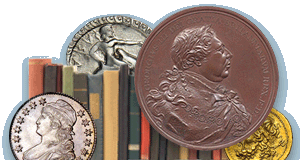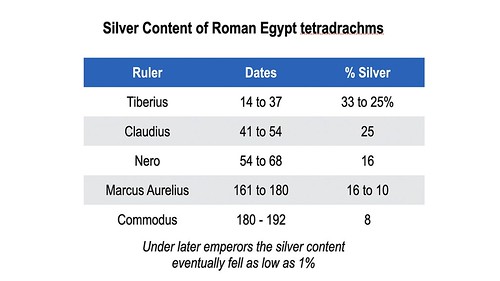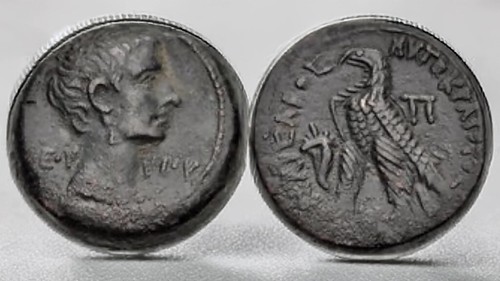
PREV ARTICLE
NEXT ARTICLE
FULL ISSUE
PREV FULL ISSUE
THE COINS OF ROMAN EGYPTMike Markowitz wrote an article in CoinWeek on the coins of Roman Egypt. An excerpt is found below. -Garrett FOLLOWING THE DEATH of Mark Antony and Queen Cleopatra VII at Alexandria in August 30 BCE, Egypt became a province of the Roman Empire. For over three centuries, Roman Egypt maintained a separate, closed currency system, based on the denominations of the previous Ptolemaic kingdom. Regular Roman coins did not circulate in Egypt, and Egyptian coinage was not exported. There was a debased silver tetradrachm of about 13 grams, and several bronze fractions. Four (later six) bronze drachms typically equaled one tetradrachm, and six small bronze obols equaled one drachm. In practice, moneychangers in the marketplace would exchange one tetradrachm for 28 or 29 obols. The coins were inscribed in Greek, Alexandria's administrative language[1]. Augustus Augustus replaced Cleopatra's portrait on the bronze coinage with his own image, adding the Greek inscription T??? ???? ("Son of a God", since he was the adopted son of the deified Julius Caesar, remembered by Alexandrians as Cleopatra's lover). The reverse bears the standing eagle that had appeared on Ptolemaic coins for centuries, with the simple inscription ???C???C ???????????C (Kaisaros Autokratoros, "Caesar Ruler"). The coins were undated. Most surviving examples are so heavily worn that the inscriptions are illegible. An exceptional specimen, described as "one of the finest known," brought $1,250 in a recent U.S. auction. Tiberius Augustus' successor Tiberius introduced a debased silver tetradrachm, probably because the old circulating Ptolemaic tetradrachms were worn out. Initially, the coins, weighing around 13 grams, consisted of about 33% silver, but this later declined to 25%. They were considered equivalent in value to the Roman denarius. The obverse bore a portrait of Tiberius wearing a laurel wreath, his name and titles in Greek[3], and dated according to his regnal year. The reverse bears the head of the deified Augustus wearing the spiked "radiate" crown, with the inscription TEOS SEBASTOS, (Theos Sebastos, "The God Augustus").
To read the complete article, see:
Wayne Homren, Editor The Numismatic Bibliomania Society is a non-profit organization promoting numismatic literature. See our web site at coinbooks.org. To submit items for publication in The E-Sylum, write to the Editor at this address: whomren@gmail.com To subscribe go to: Subscribe All Rights Reserved. NBS Home Page Contact the NBS webmaster 
|



